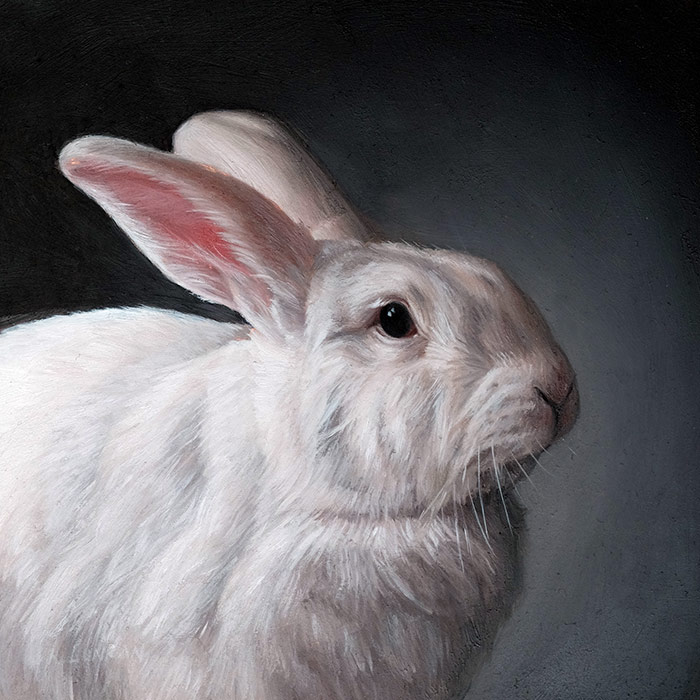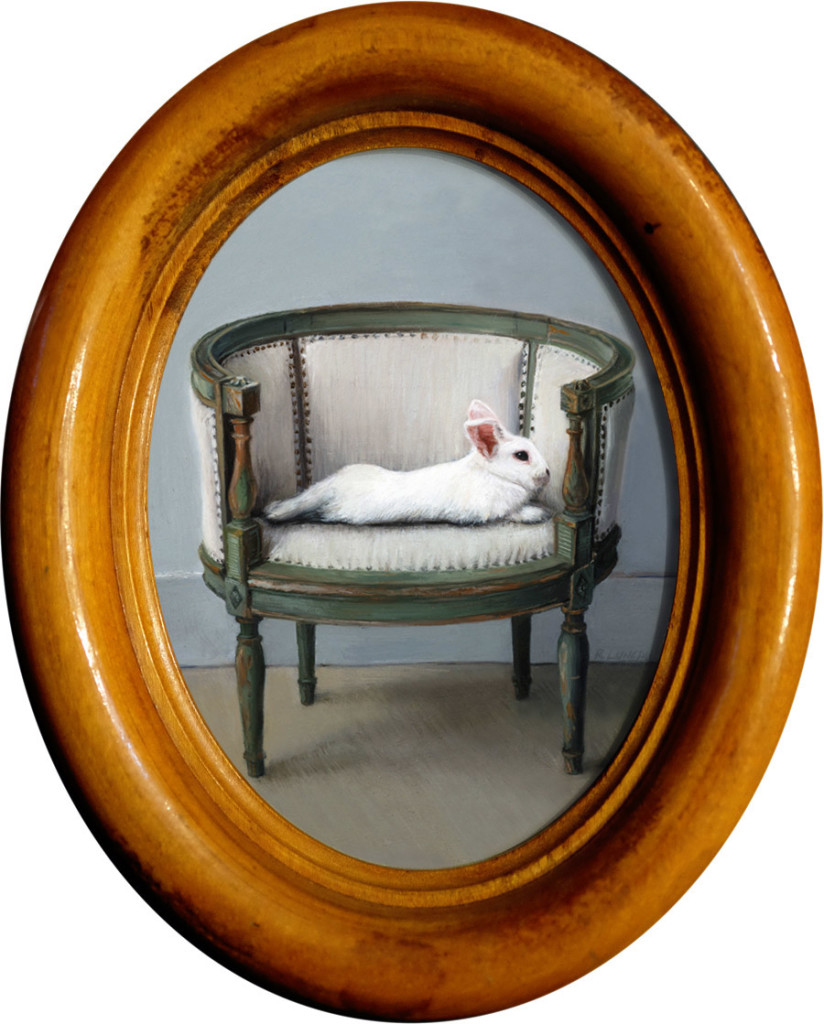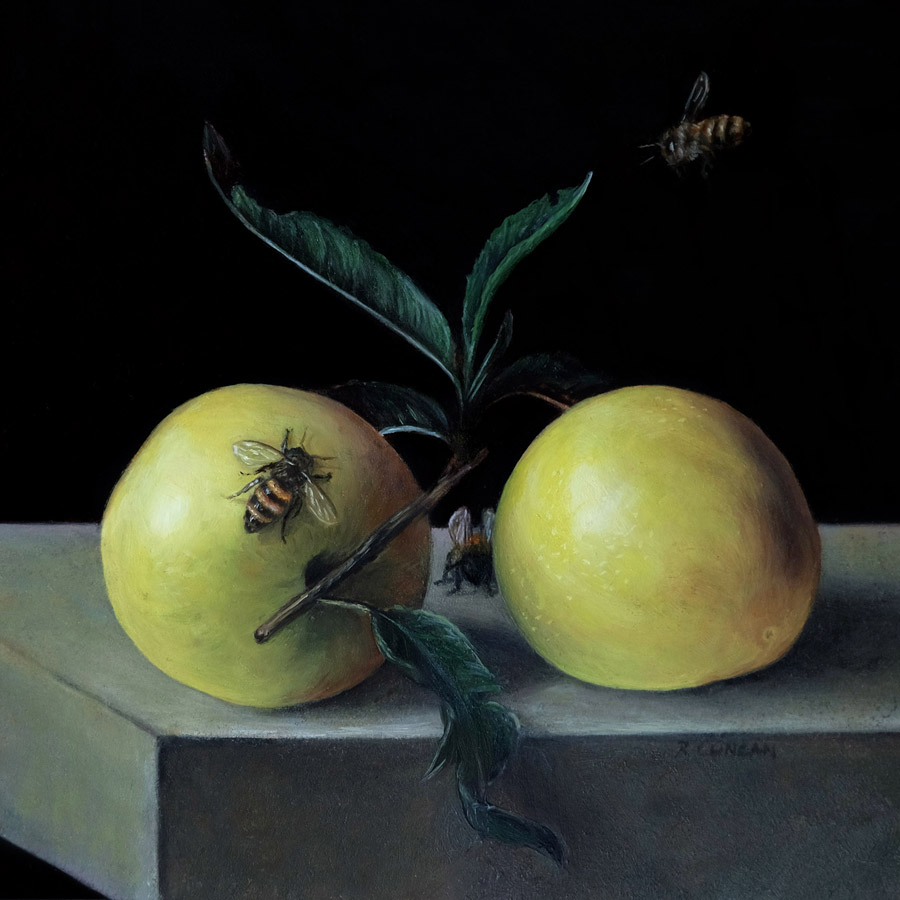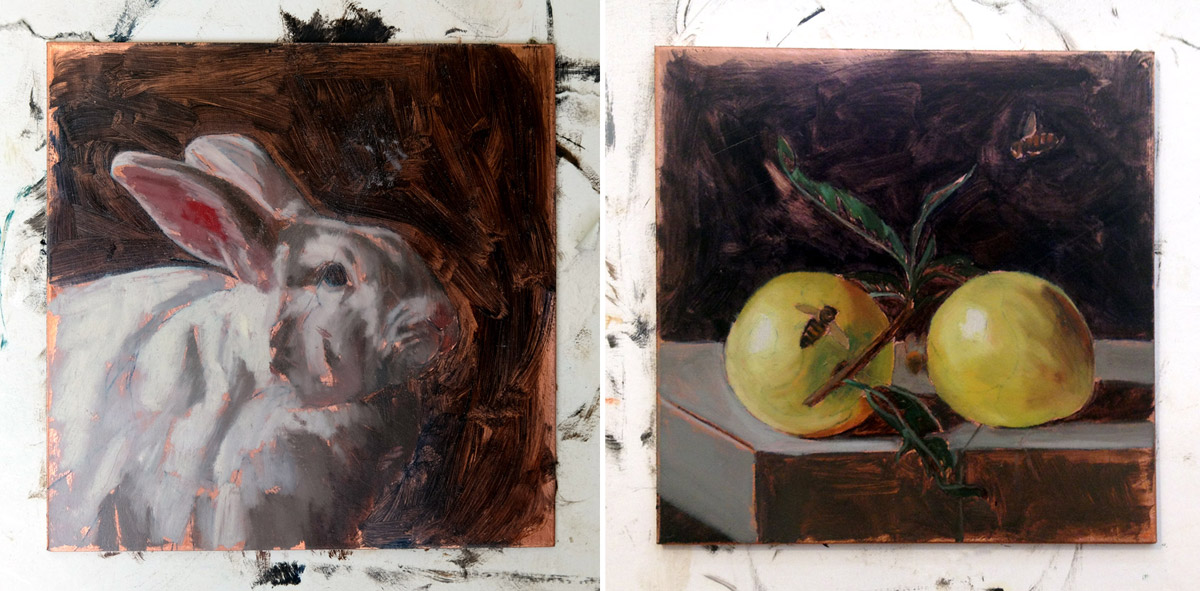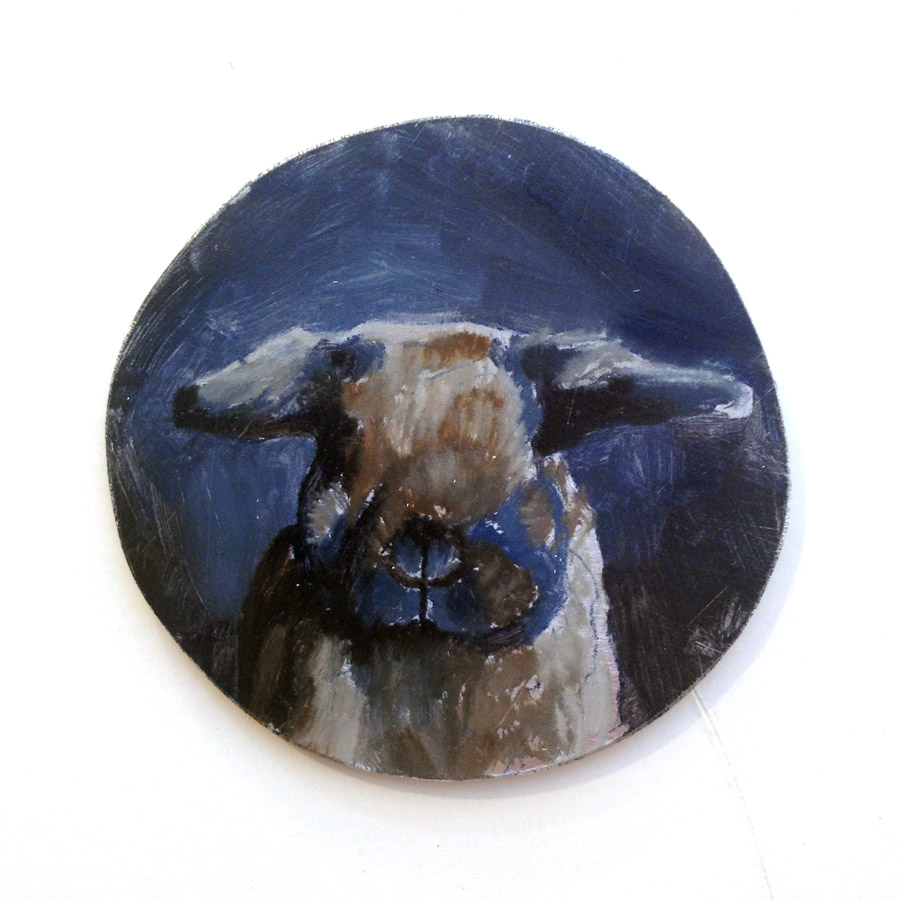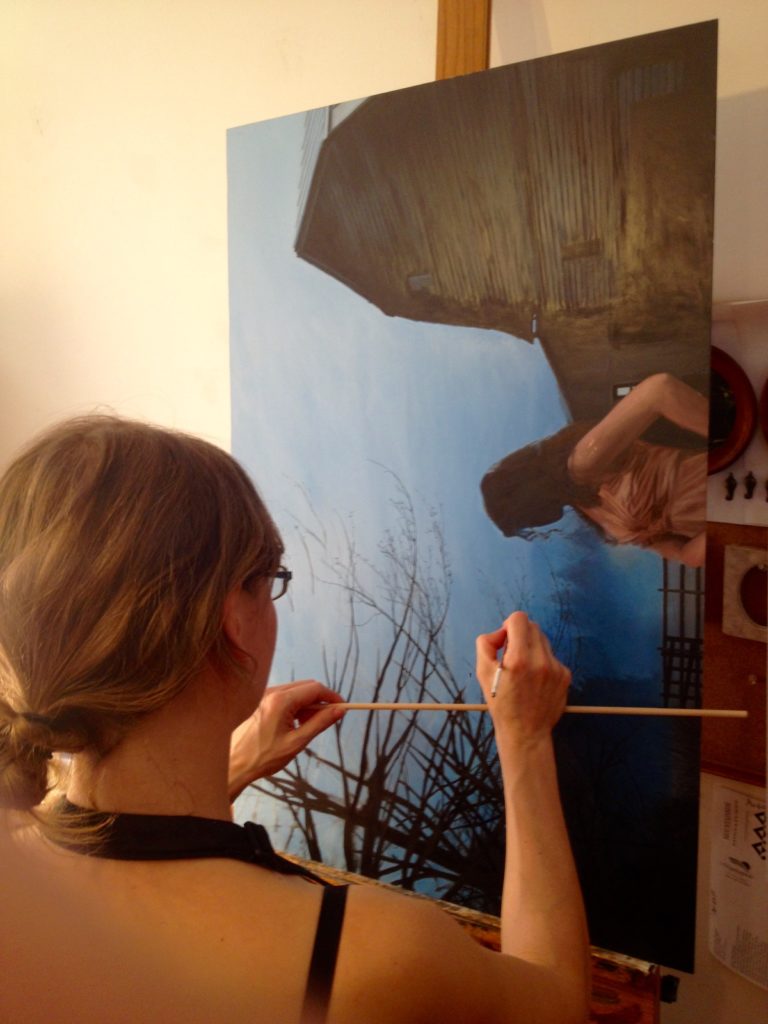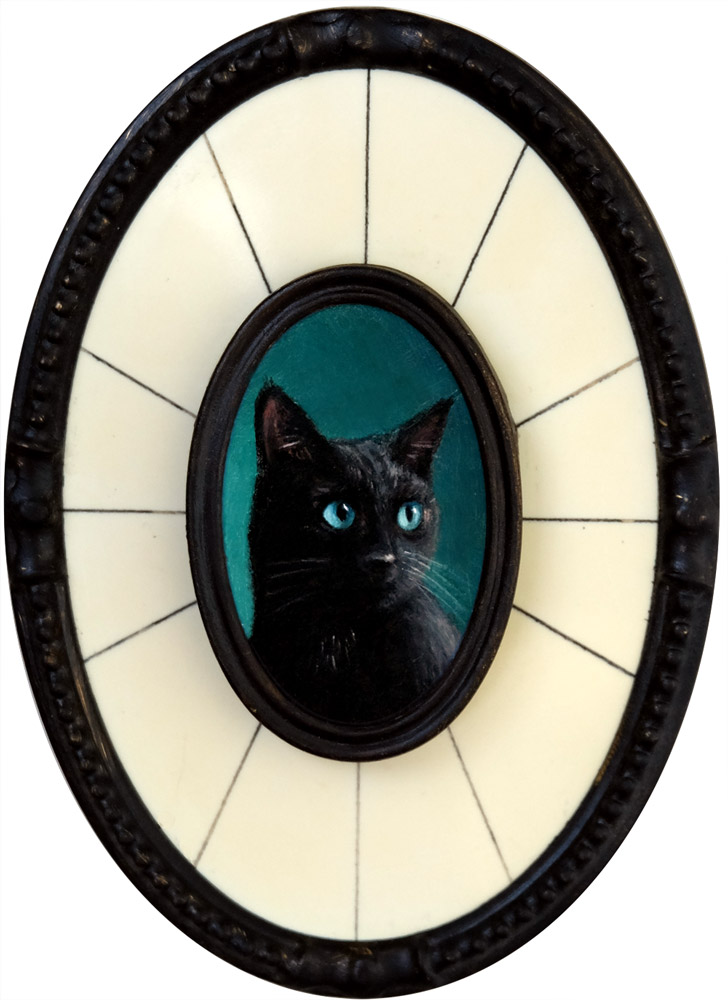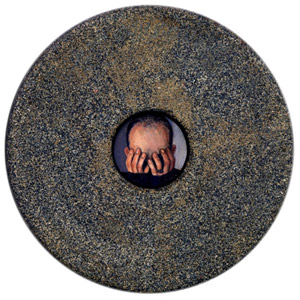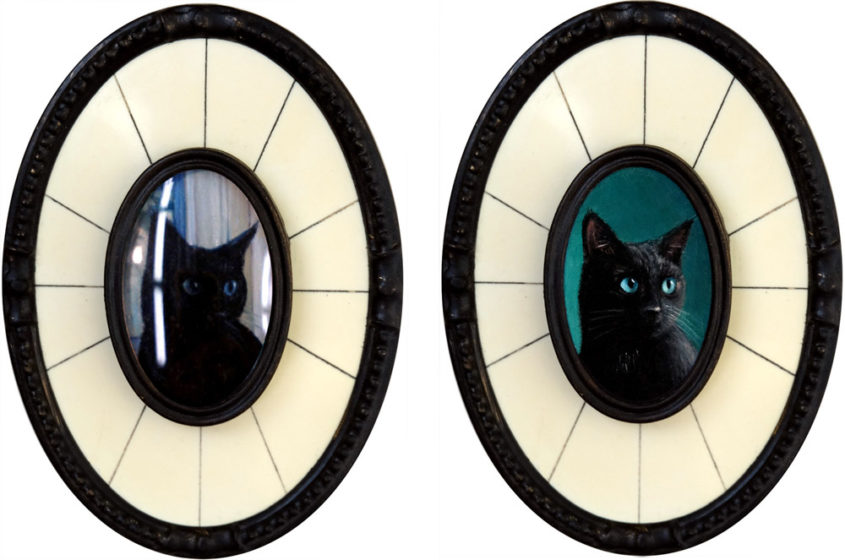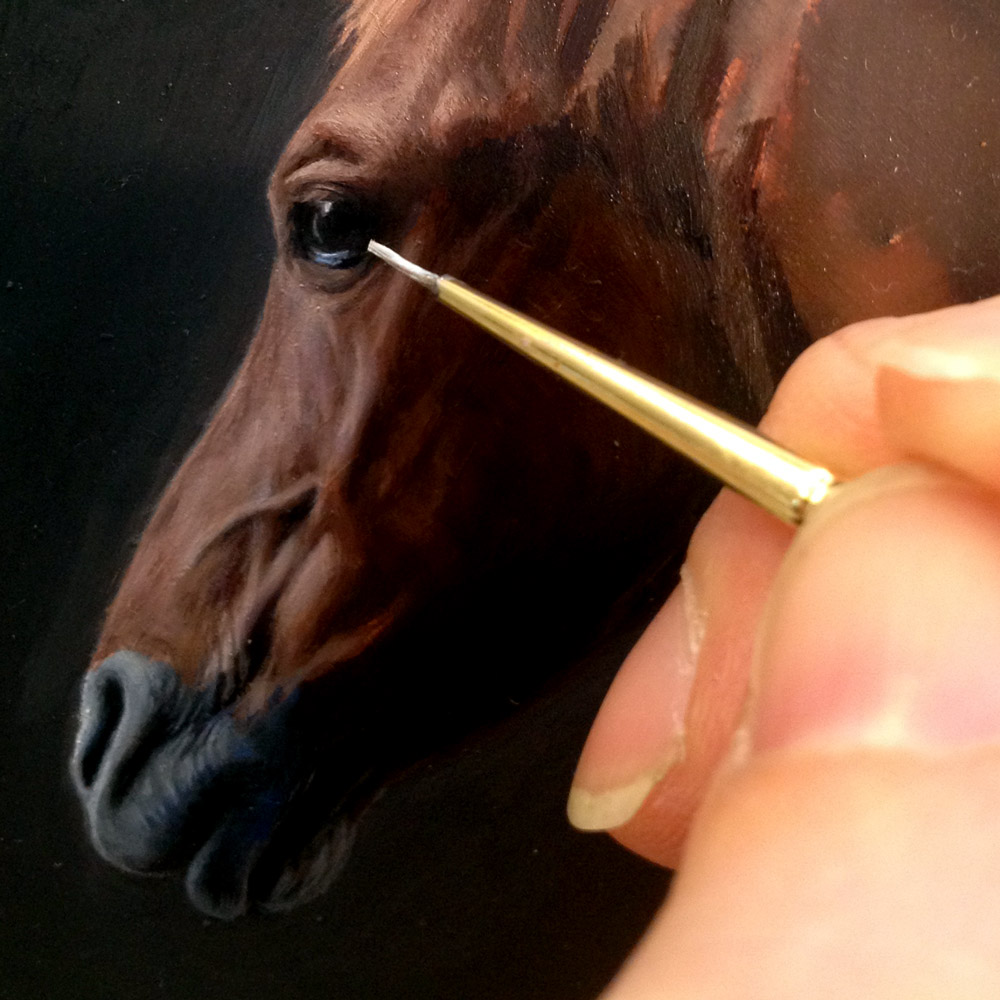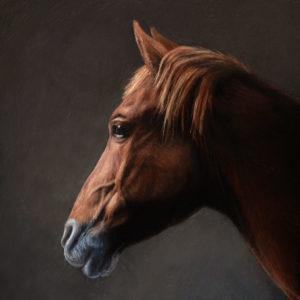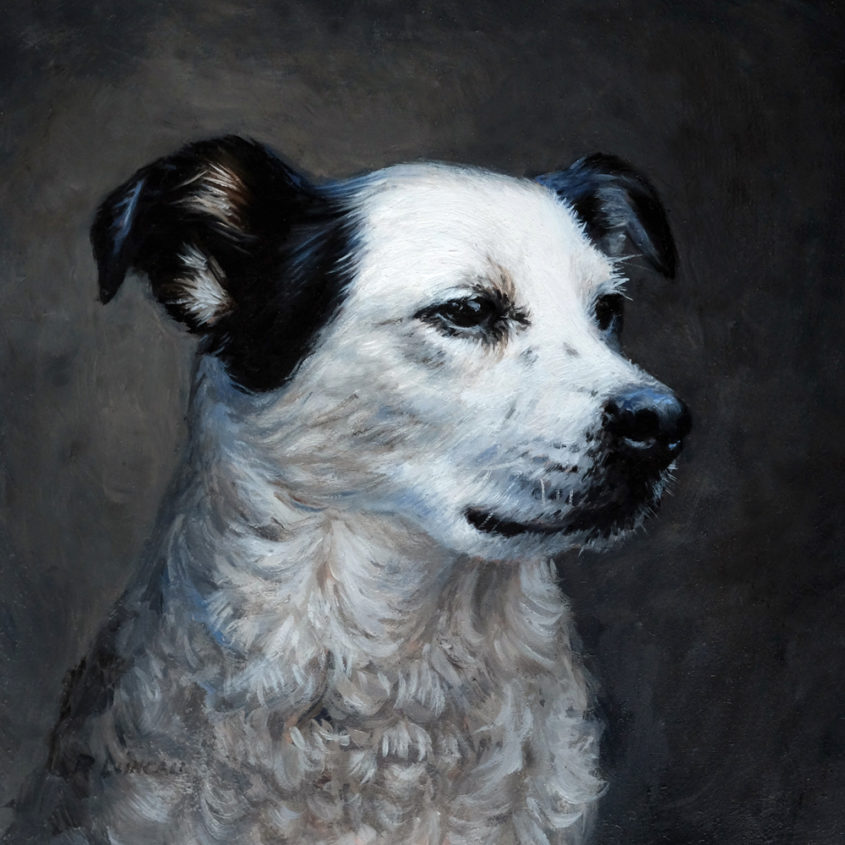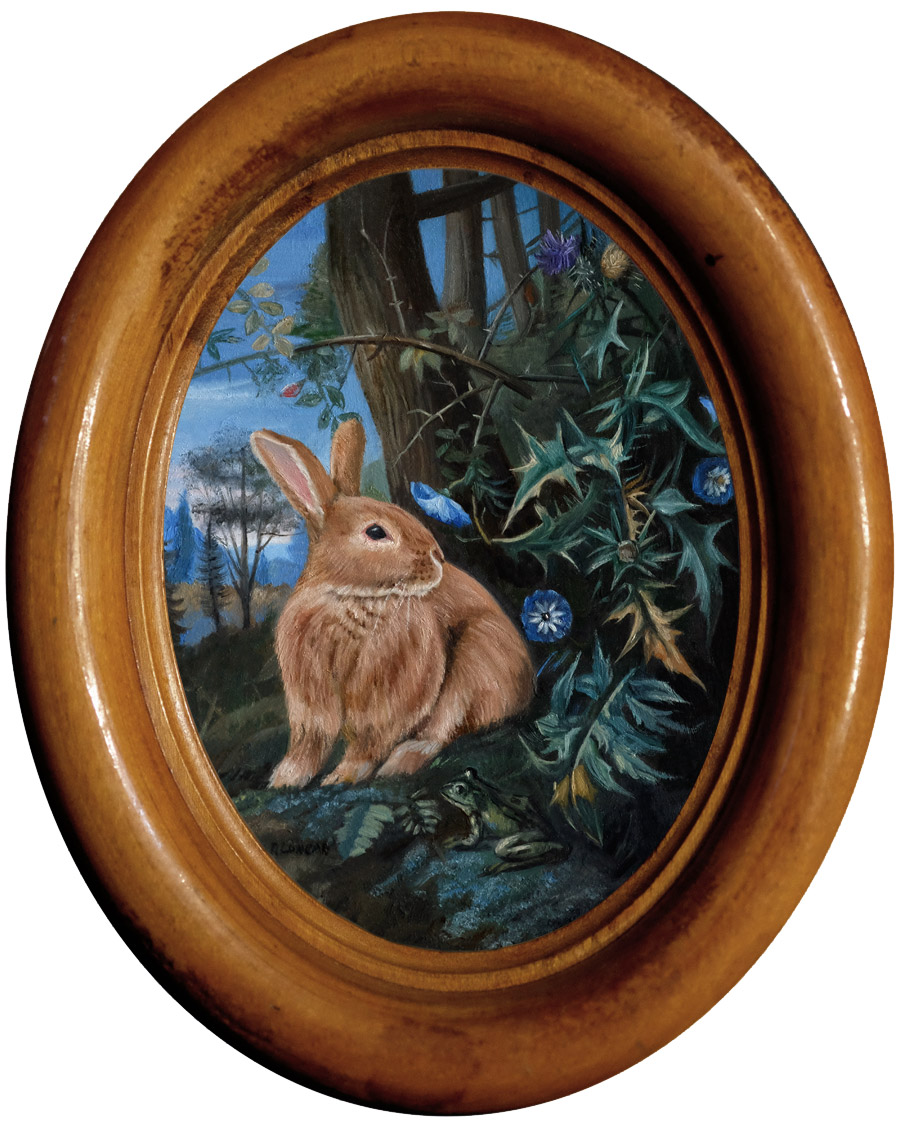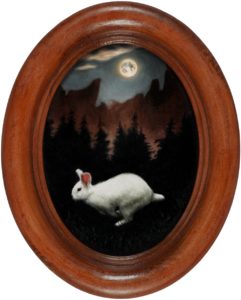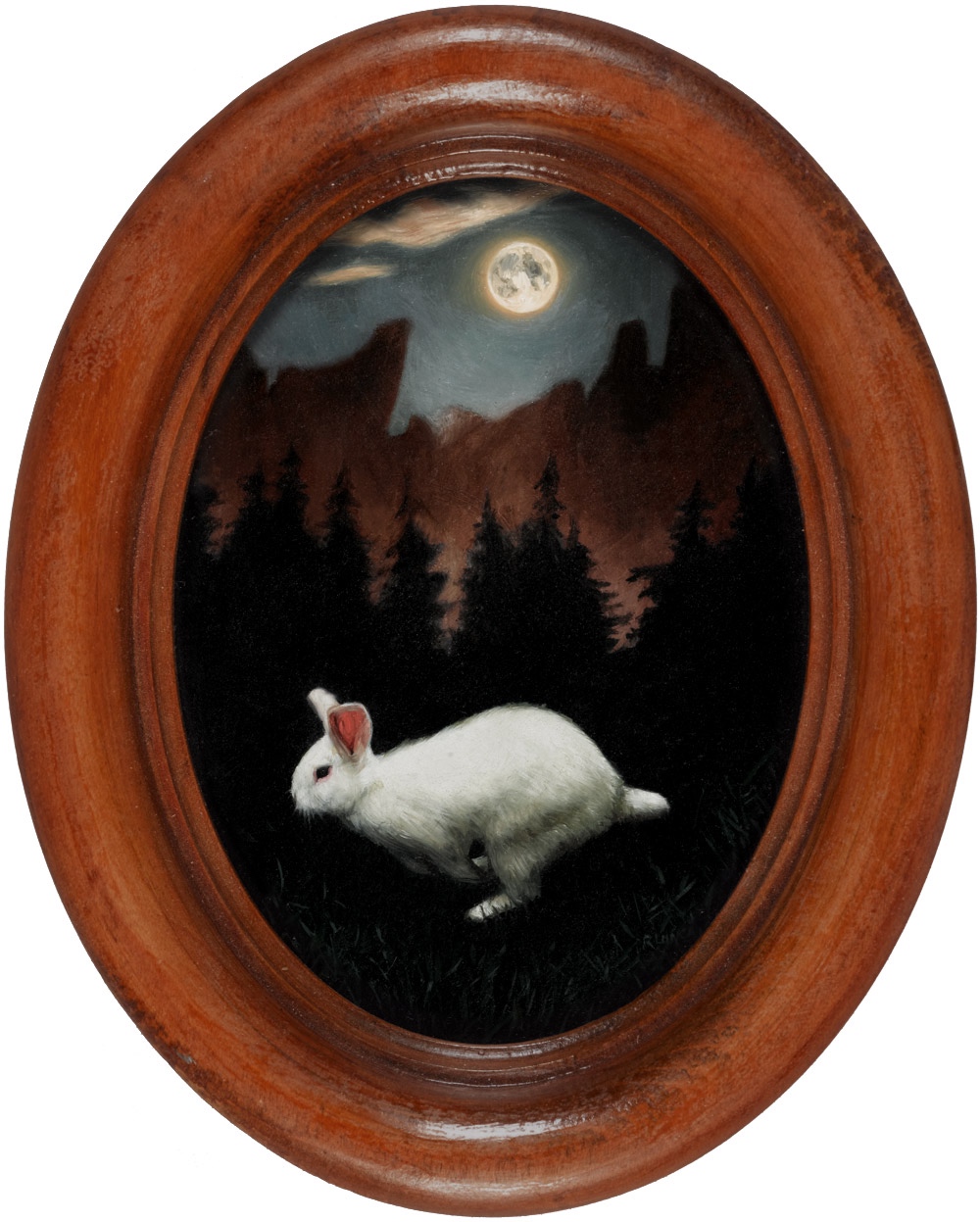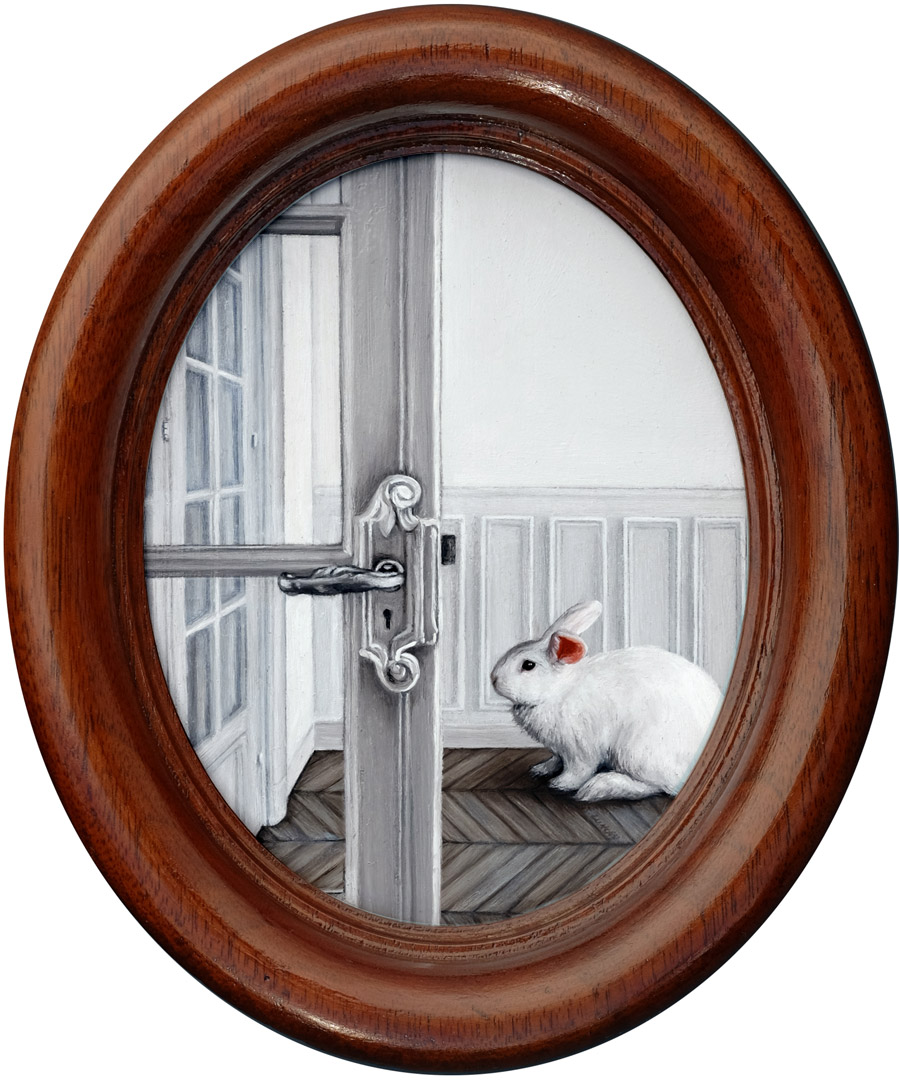The Myth of the Moon Rabbit
In my latest miniature, I pay homage to this cross-cultural legend, drawing from stories that span Japan, China, South America, and beyond. As I paint the rabbits in this series of Miniatures, I am also researching their historical role in artwork and mythology. I am especially captivated with the many stories that connect the rabbit with the moon. This month, I am paying homage to this cross-cultural body of mythology.
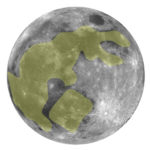 Busy Bunny, An Example of Virtue and Hard Work Across the Globe
Busy Bunny, An Example of Virtue and Hard Work Across the Globe
Rabbits do like to keep occupied. Mine busy themselves remodeling their cardboard condos. But cultures around the world have had different ideas about what the rabbit in the moon might be up to.
Asia
In Japan’s late Heian period (794–1185), one story depicts the moon rabbit pounding mochi for rice cakes. This scene is preserved in the anthology Konjaku Monogatarishū. In Chinese folklore, the same rabbit mixes the elixir of life for the moon goddess Chang’e.
The root of those and other Asian myths is the Buddhist story from Jataka tales (Tale 316),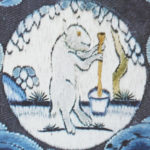
circa 4th century BCE. The tale opens with the deity Brahmā (Hindu god of creation), coming to the Earth in disguise as an old man. When he begs for food, four animals offer to help: a monkey, an otter, a jackal and a rabbit. The monkey brings fruits, the otter fish, the jackal steals a lizard and a milk-curd for him, but the rabbit only has grass to offer. Knowing that the old man can’t eat the grass, he instead offers himself and jumps into the old man’s fire. The deity then reveals himself and quenches the fire before the rabbit is burnt. He is so touched by the virtue and self-sacrifice of the rabbit that he carries him to the heavens, leaving his likeness upon the moon to remind us of his noble example.
South America
From the opposite side of the globe, a similar Aztec myth features the god Quetzalcoatl, who makes a journey on the earth as a man and finds himself unable to find food or water after walking a long way. Just when he thinks death is certain, a nearby rabbit offers herself as food to save his life. Moved by the rabbit’s offer, Quetzalcoatl elevates her to the moon, then lowers her back down. Her shadow remains on the moon for us to remember how a little rabbit touched the heart of a god.
Adventure and Fertility
And other myths connect the rabbit with the moon as well. Native American (Cree) myth describes the rabbit as an adventurer that visits the moon with help of a friendly crane. In Chinese folklore, the rabbit is so prolific that they can conceive with just the touch of moonlight.
My Muse, the White Rabbit
Rather than feature my rabbit in her ‘natural environment’ (i.e. the painting studio), this month Eleanor dashes into a romantic, otherworldly nighttime scene inspired by German Romantic painter Caspar David Friedrich. I am studying his work for a series of portraits, and his dramatic cliffs made a home first in my imagination, and now in this latest miniature.
My Ellie has been fixed so she won’t be doing any reproducing, moonlight or not. I also have my doubts that she’d impress the gods with shows of selfless generosity. Stealing her brothers treats is one of her favorite pastimes. In this painting, though, she is my Moon Rabbit, running wild and free. Who knows how far she can go!
